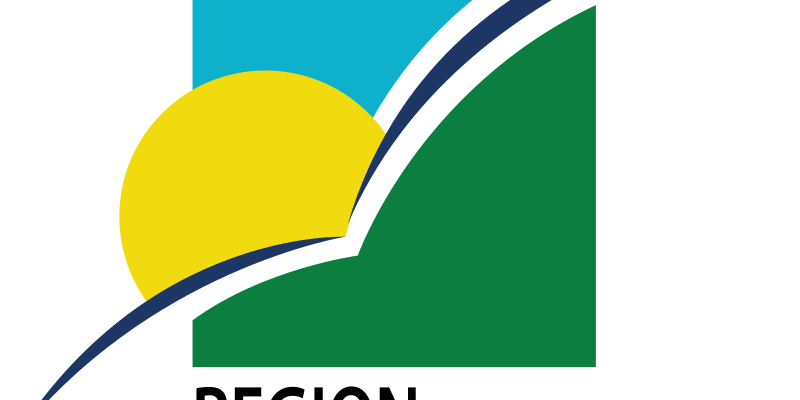Guadeloupe is an overseas department of France, one of the former colonies of this country, whose symbols are definitely worthy of special attention.
History of the flag
The history of the appearance of the Guadeloupe flag breathes tragic events: since the first half of the 17th century, for two hundred years, this island state has been a disputed territory between France and Britain, each of which was claiming possession of the island. France originally asserted its rights in 1635, destroying most of the indigenous population of the island, turning it into its sugar cane colony. Since then Guadeloupe has repeatedly changed hands of the British and the French, at the end of which it was officially recognized as French territory in 1814.
Today the country is an overseas department of France and has official and unofficial symbols explaining the history of the former colony.
This is what the flag of Guadeloupe looks like:

Description
The official flag of the former colony is a white cloth with a smaller rectangle, divided into two parts, blue and green, with a pattern. The design depicts a dark blue seabird flying against the background of a rising sun. Under the two-color rectangle is the inscription in black in French, «REGION GUADELOUPA,» underlined by a yellow line.
Guadeloupe has two unofficial flags.
The first unofficial flag is divided in two colors, blue and red, into two unequal parts. On the blue part, there are three stylized French heraldic lilies in yellow. The red part shows a sheaf of green sugarcane behind the sun.

The second flag uses black instead of red, alluding to the Negro origins of the sugar cane people.

Flag colours
The colors used on the flag of the French overseas department:
- white;
- yellow;
- green;
- light blue;
- blue;
- red.
Meanings of colors and flag symbol
The official banner of the former colony and its symbolism matter:
- green — the evergreen vegetation of the island;
- blue — the clear blue sky over Guadeloupe;
- yellow ball — the sun and the hot climate of the island;
- a blue and white tick — a seabird.
In general, the banner bears the symbolism of the natural conditions of the former colony.
One of the unofficial flags of the French overseas department has a less unambiguous meaning:
- red — the valor and courage of the islanders who fought for their independence and the good of France;
- blue, the color of the sea surrounding the island;
- three yellow lilies on the blue part of the flag — a reference to the ancient French banner of the king, denoting the long time the island has been in the possession of France;
- the yellow sun — Guadeloupe’s friendliness to tourists;
- the green reeds, the island’s main export product.
The symbolism of the banner reflects its history and position in today’s economy.
At official events, the official departmental flag or the French tricolor is used more often.
Guadeloupe is one of those countries whose banners are not just a collection of imaginary symbols and contrasting colors. It is a colony whose history is literally written in sweat and blood on this cloth.
General information about Guadeloupe
| Official language | French |
| Capital | Bass Ter |
| Territory | 1628.43 km2 |
| Population | 396,814 people |
| Currency | Euro |
| Phone Code | +590 |










Как мужчина, я бы хотел отметить, что флаг Гвадалупы – это интересный и глубокий символ, который отражает культурное наследие и многогранную историю этого региона. Его дизайн, с одной стороны, соединяет элементы французского колониального влияния, а с другой – показывает уникальные черты местной идентичности. Я считаю, что важно понимать не только эстетическую сторону флага, но и его значение для жителей Гвадалупы, которые гордятся своей культурой и историей. Это не просто кусок ткани, а воплощение духа народа!
I once visited Guadeloupe and was fascinated by its vibrant flag. It really reflects the island’s rich culture and history. I remember chatting with locals who explained the symbols and their meanings. It made me appreciate the place and its heritage even more. Such a memorable experience!